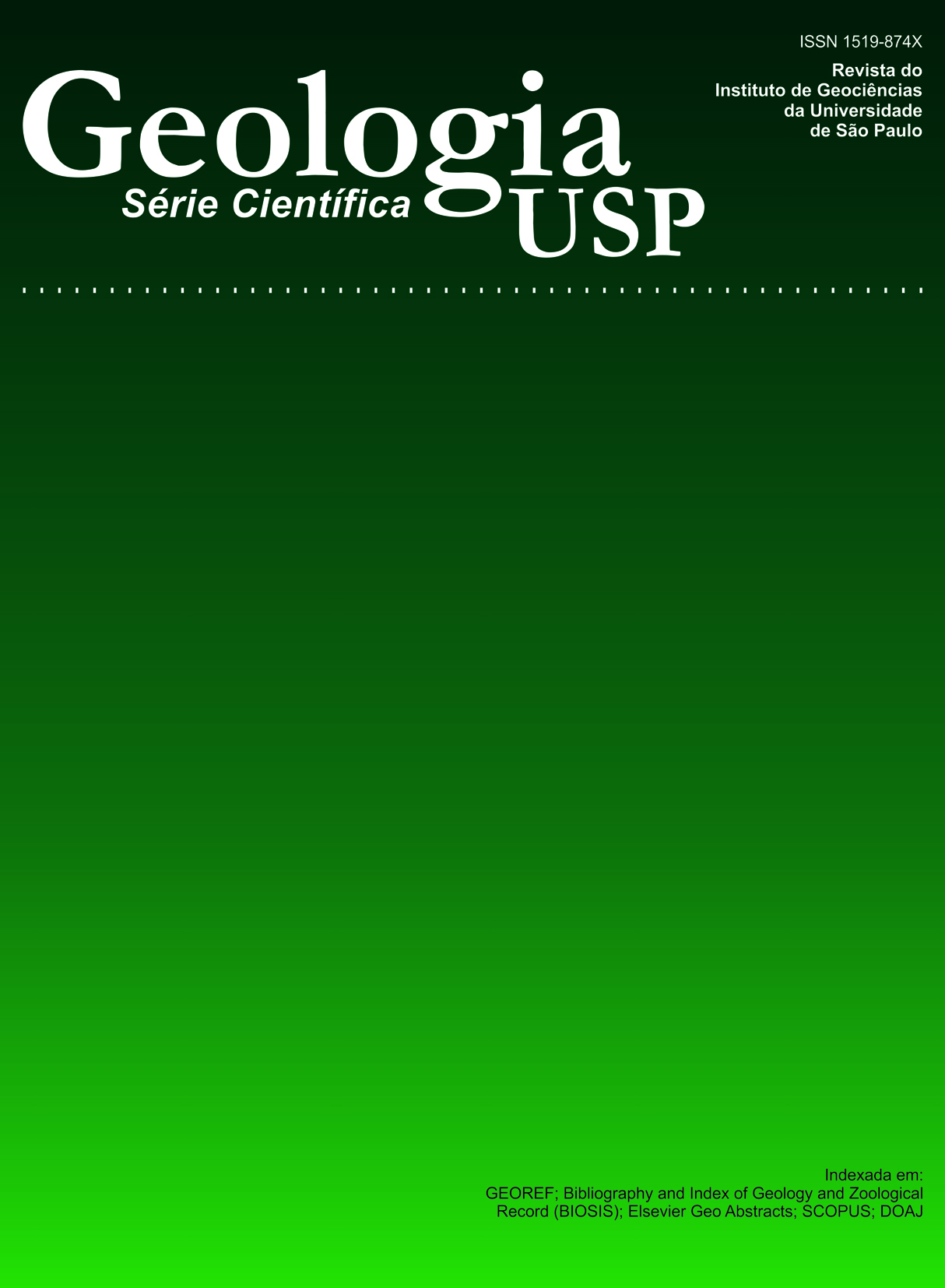Stratigraphy and geochronlogy of the Guarinos greenstone belt, Goiás, Brazil
DOI:
https://doi.org/10.5327/Z1519-874X2012000200003Keywords:
Guarinos greenstone belt, Goiás State, Central Brazil, Stratigraphic reappraisal, Geochronology, Basin evolutionAbstract
The Guarinos greenstone belt is one of the three low metamorphic grade supracrustal rocks assemblage rimmed by orthogneisses of Central Brazil's Archean Block northern limits. The investigation of the stratigraphy of those greenstone belts started by the end of 1970's and underwent improvements during the years as a result of detailed geological mapping. The latest and accepted stratigraphic model for the Guarinos greenstone belt refers its supracrustal rocks under the Guarinos Group, which is subdivided into the Serra do Cotovelo (metakomatiites), Serra Azul (metabasalts), São Patricinho (mafic metaturbidites), Aimbé (BIF) and Cabaçal (carbonaceous phyllites and impure metarenites) formations. Detailed geologic mapping (1:10,000) and drill-cores during an exploration program by Yamana Desenvolvimento Mineral S.A. in the area allowed a better definition of the metasedimentary package of the Cabaçal Formation, which is here formally proposed to be subdivided into a Lower Member of carbonaceous phyllites with basalt lava flows and gondite lenses interlayers, an Intermediate Member of gondite, iron formation, metachert and massive barite lenses, and an Upper Member of carbonaceous phyllites with minor metachert lenses. The impure metarenites, formerly considered as part of the Cabaçal Formation, are proposed under the Mata Preta Formation, which is laterally interfingered with the Cabaçal Formation. U-Pb LA-ICP-MS geochronological data of detrital zircon grains from the São Patricinho mafic metaturbidites and the impure metarenites of the Mata Preta formations indicate that the major source-area of the clastic load had a Siderian to Rhyacian age, with minor contribution from Archean rocks. From the rock assemblage of both units and their contact relationships it is concluded that the basin stage they represent evolved during the world-wide Anoxic Oceanic Event (AOE) that took place during the 2.2 to 2.06 Ga, represented by the carbonaceous phyllites of the Cabaçal Formation, coeval with the erosion of a magmatic arc that derived the immature clastic load of the Mata Preta Formation.Downloads
Download data is not yet available.
Downloads
Published
2012-08-01
Issue
Section
Articles
License
Authors who publish in this journal shall comply with the following terms:
- Authors keep their copyright and grant to Geologia USP: Série Científica the right of first publication, with the paper under the Creative Commons BY-NC-SA license (summary of the license: https://creativecommons.org/licenses/by-nc-sa/4.0 | full text of the license: https://creativecommons.org/licenses/by-nc-sa/4.0/legalcode) that allows the non-commercial sharing of the paper and granting the proper copyrights of the first publication in this journal.
- Authors are authorized to take additional contracts separately, for non-exclusive distribution of the version of the paper published in this journal (publish in institutional repository or as a book chapter), granting the proper copyrights of first publication in this journal.
- Authors are allowed and encouraged to publish and distribute their paper online (in institutional repositories or their personal page) at any point before or during the editorial process, since this can generate productive changes as well as increase the impact and citation of the published paper (See The effect of Open Access and downloads on citation impact).
How to Cite
Jost, H., Rodrigues, V. G., Carvalho, M. J. de, Chemale Junior, F., & Marques, J. C. (2012). Stratigraphy and geochronlogy of the Guarinos greenstone belt, Goiás, Brazil . Geologia USP. Série Científica, 12(2), 31-48. https://doi.org/10.5327/Z1519-874X2012000200003





